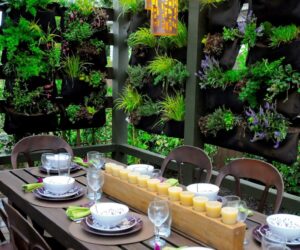Hydroponic gardening is a soil-less cultivation method that allows plants to grow using nutrient-rich water. Unlike traditional gardening, hydroponic systems provide an ideal environment for plants to grow without the need for soil, which is often depleted of nutrients and can harbor harmful pathogens. Hydroponics is an efficient and sustainable way of growing plants, making it an excellent choice for modern farming. In this article, we’ll delve into the benefits of hydroponic gardening, the different types of hydroponic systems, and how to get started with your own hydroponic garden.

The Benefits Of Hydroponic Gardening
Hydroponic gardening offers a range of benefits that make it an excellent choice for those looking to grow plants in a sustainable and efficient way. One of the most significant benefits of hydroponic gardening is its water efficiency. As seen at Logan Hydroponics, hydroponic systems use up to 90% less water than traditional soil-based gardening, making it an ideal choice for arid and drought-prone regions. Additionally, hydroponic systems can be set up in a controlled environment, which allows for precise nutrient delivery, reducing the need for fertilizers and pesticides.
Types Of Hydroponic Systems
There are several types of hydroponic systems to choose from, each with its own advantages and disadvantages. The most popular hydroponic systems are:
- Deep Water Culture (DWC): DWC is the simplest and most affordable hydroponic system. Plants are suspended in nutrient-rich water with air stones providing oxygen to the roots.
- Nutrient Film Technique (NFT): In an NFT system, a thin film of nutrient-rich water flows through a channel, and plants are suspended in holes in the channel. The roots are exposed to the water and absorb nutrients as the water passes over them.
- Ebb and Flow: An ebb and flow system involves flooding the growing tray with nutrient-rich water and then draining it. The water is cycled in and out of the growing tray on a timer.
- Drip Irrigation: In a drip irrigation system, a slow drip of nutrient-rich water is delivered directly to the roots of the plants. This is one of the most common hydroponic systems used for large-scale commercial farming.
Getting Started With Hydroponic Gardening
Getting started with hydroponic gardening is relatively easy, and there are many resources available online to help beginners set up their systems. The first step is to choose the type of hydroponic system that best fits your needs and budget. You’ll also need to choose the plants you want to grow and the appropriate nutrients for them.
Once you’ve chosen your hydroponic system and plants, you’ll need to set up the system and monitor it regularly. You’ll need to maintain the pH levels of the nutrient solution, keep an eye on the water temperature, and ensure that the plants are receiving the right amount of light. With time and practice, you’ll soon be able to grow healthy and vibrant plants using hydroponic gardening.

The Future Of Hydroponic Gardening
Hydroponic gardening is gaining popularity around the world due to its numerous advantages over traditional farming methods. As the global population continues to grow, and resources become scarcer, hydroponic gardening presents a sustainable and efficient solution to the challenges of modern agriculture. With the rise of urban farming, hydroponic gardening has become an ideal method of food production in cities, where land is scarce and expensive.
Furthermore, advancements in technology have led to the development of more efficient and automated hydroponic systems that make it easier for people to grow their own food at home. As we look toward the future, it’s clear that hydroponic gardening will play an increasingly important role in providing a reliable source of fresh produce for people around the world.
Hydroponic gardening is an excellent way to grow plants sustainably and efficiently. Its many benefits, including water efficiency and precise nutrient delivery, make it an attractive option for modern agriculture. By choosing the right hydroponic system, selecting the appropriate plants and nutrients, and carefully monitoring the system, you can create a thriving hydroponic garden in your own home. With this method of gardening, you can enjoy fresh, healthy produce all year round.



